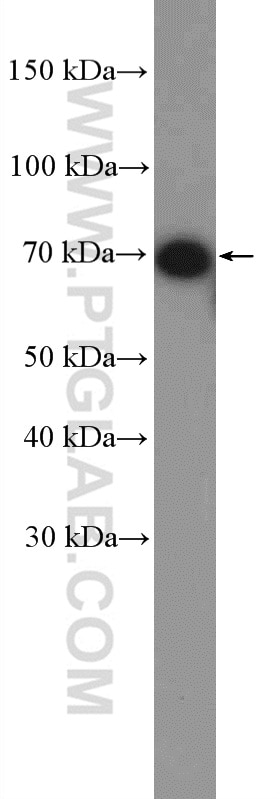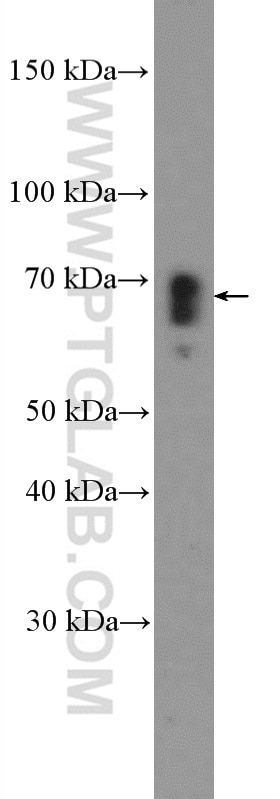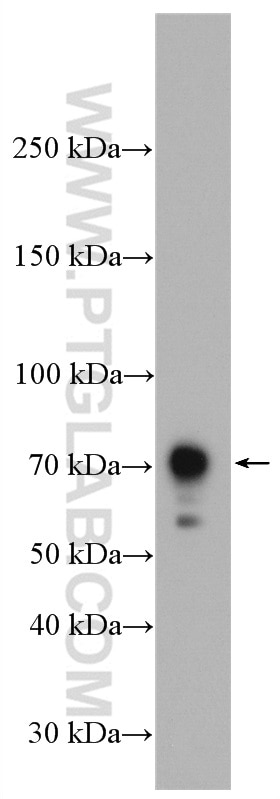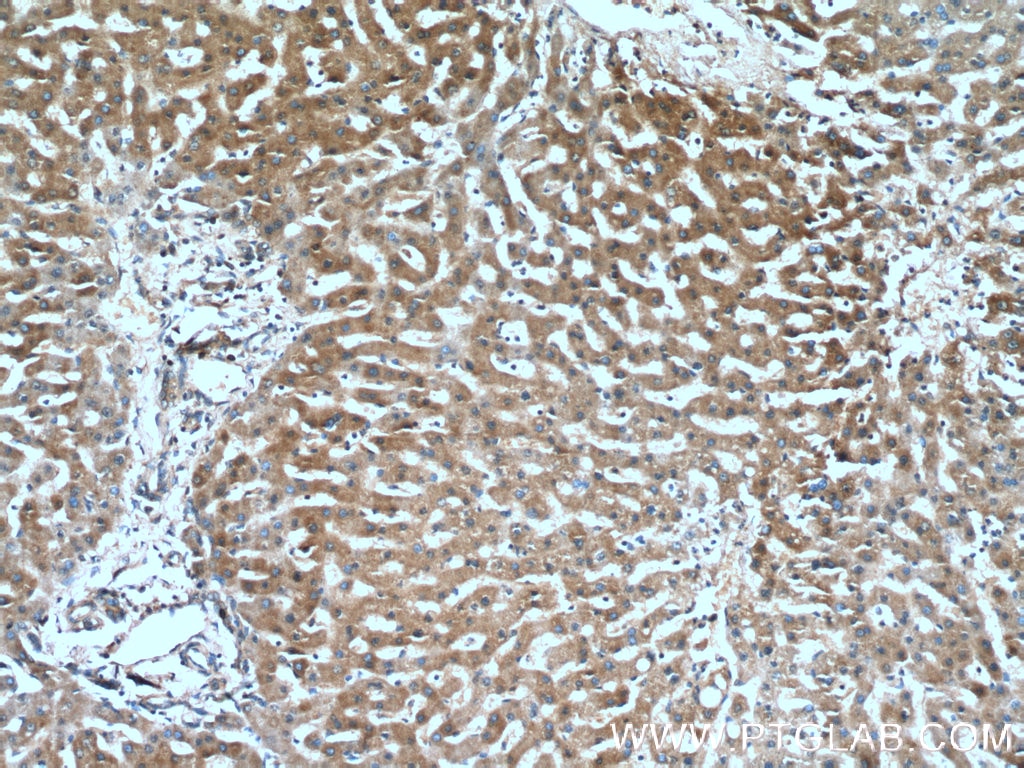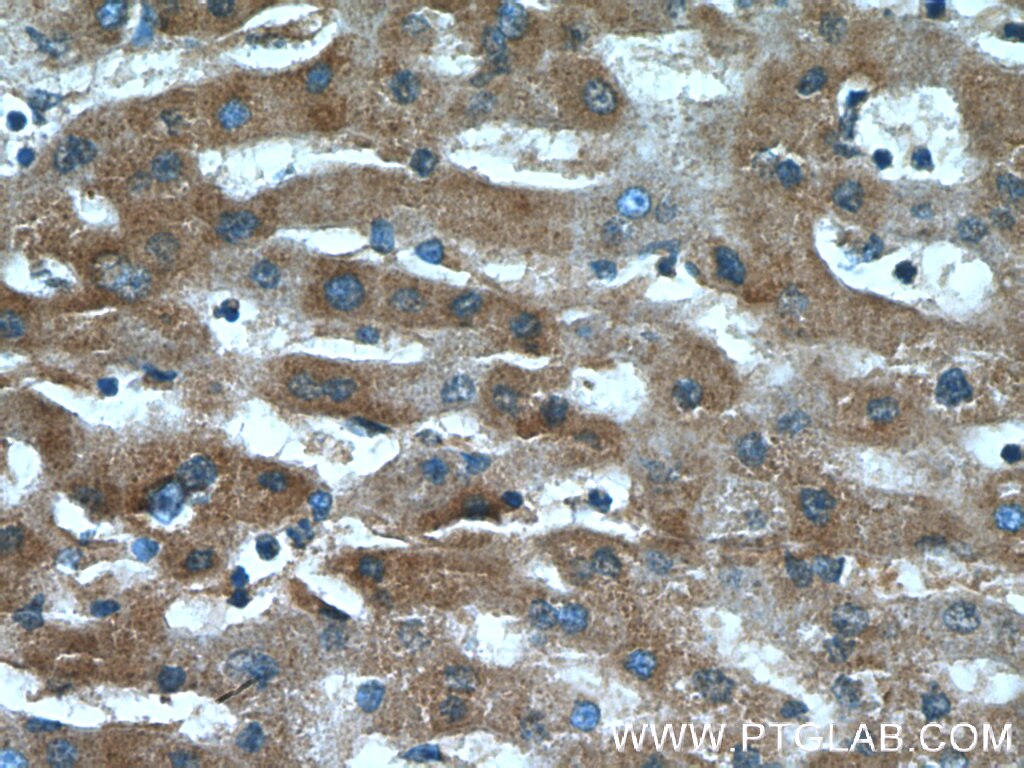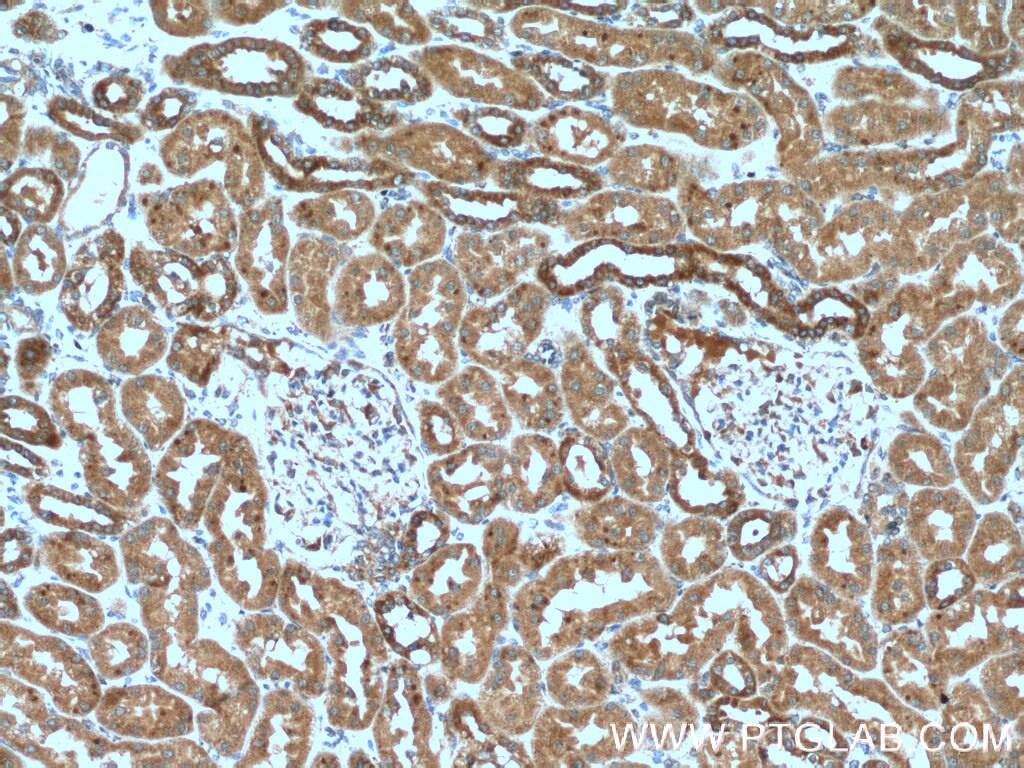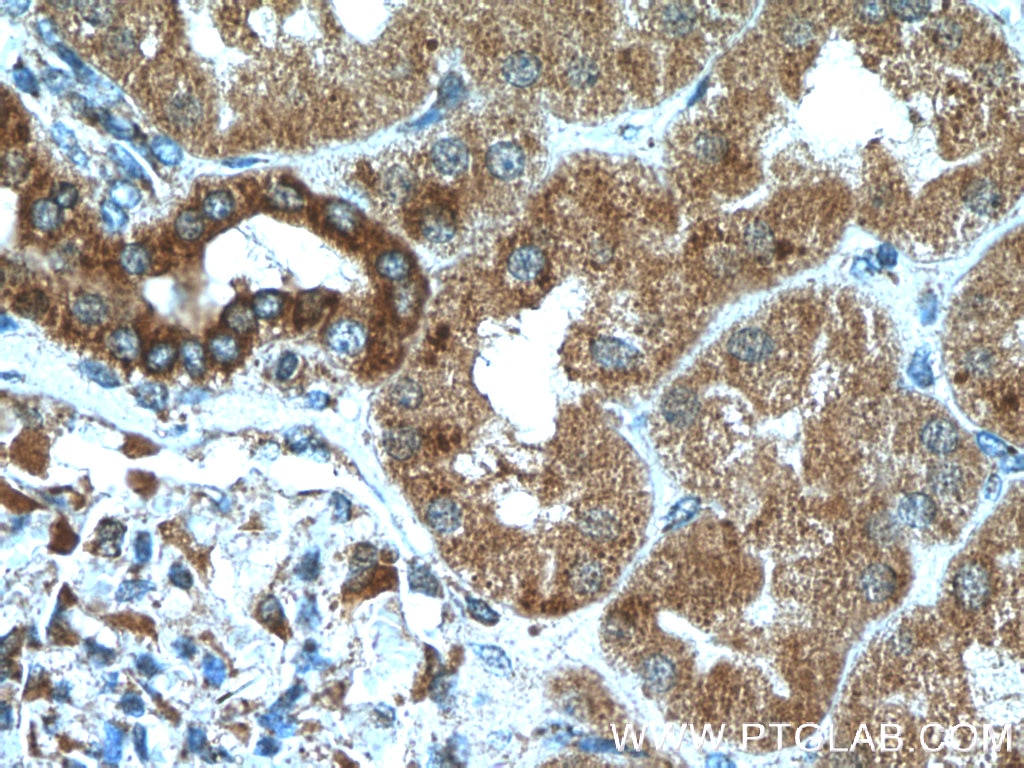Anticorps Polyclonal de lapin anti-CXCR3
CXCR3 Polyclonal Antibody for IHC, WB,ELISA
Hôte / Isotype
Lapin / IgG
Réactivité testée
Humain, souris
Applications
WB, IHC, IF, ELISA
Conjugaison
Non conjugué
N° de cat : 26756-1-AP
Synonymes
Galerie de données de validation
Applications testées
| Résultats positifs en WB | cellules HepG2, cellules Jurkat, tissu hépatique de souris |
| Résultats positifs en IHC | tissu hépatique humain, tissu rénal humain il est suggéré de démasquer l'antigène avec un tampon de TE buffer pH 9.0; (*) À défaut, 'le démasquage de l'antigène peut être 'effectué avec un tampon citrate pH 6,0. |
Dilution recommandée
| Application | Dilution |
|---|---|
| Western Blot (WB) | WB : 1:500-1:3000 |
| Immunohistochimie (IHC) | IHC : 1:50-1:500 |
| It is recommended that this reagent should be titrated in each testing system to obtain optimal results. | |
| Sample-dependent, check data in validation data gallery | |
Applications publiées
| KD/KO | See 1 publications below |
| WB | See 7 publications below |
| IHC | See 3 publications below |
| IF | See 5 publications below |
Informations sur le produit
26756-1-AP cible CXCR3 dans les applications de WB, IHC, IF, ELISA et montre une réactivité avec des échantillons Humain, souris
| Réactivité | Humain, souris |
| Réactivité citée | Humain, souris |
| Hôte / Isotype | Lapin / IgG |
| Clonalité | Polyclonal |
| Type | Anticorps |
| Immunogène | CXCR3 Protéine recombinante Ag25056 |
| Nom complet | chemokine (C-X-C motif) receptor 3 |
| Masse moléculaire calculée | 368 aa, 41 kDa |
| Poids moléculaire observé | 70 kDa |
| Numéro d’acquisition GenBank | BC034403 |
| Symbole du gène | CXCR3 |
| Identification du gène (NCBI) | 2833 |
| Conjugaison | Non conjugué |
| Forme | Liquide |
| Méthode de purification | Purification par affinité contre l'antigène |
| Tampon de stockage | PBS avec azoture de sodium à 0,02 % et glycérol à 50 % pH 7,3 |
| Conditions de stockage | Stocker à -20°C. Stable pendant un an après l'expédition. L'aliquotage n'est pas nécessaire pour le stockage à -20oC Les 20ul contiennent 0,1% de BSA. |
Informations générales
CXCR3 (C-X-C chemokine receptor type 3) is a G-protein-coupled seven-transmembrane domain chemokine receptor that is expressed on the surface of a number of cell types, including activated CD4+ and CD8+ T cells, NK and NK-T cells, plasmacytoid dendritic cells, and some B cells. CXCR3 is activated by three related chemokines (CXCL9, CXCL10, and CXCL11) and plays an important role in effector T-cell and NK cell trafficking. CXCR3 has three isoforms termed as CXCR3-A, CXCR3-B and CXCR3-alt with the calculated molecular mass of 41kDa, 46kDa and 29kDa respectively. The apparent molecular mass of CXCR3 detected by some scientists is 70kDa, but 45kDa by some others. (PMID: 16847335, 15150261, 22885102, 19151743)
Protocole
| Product Specific Protocols | |
|---|---|
| WB protocol for CXCR3 antibody 26756-1-AP | Download protocol |
| IHC protocol for CXCR3 antibody 26756-1-AP | Download protocol |
| Standard Protocols | |
|---|---|
| Click here to view our Standard Protocols |
Publications
| Species | Application | Title |
|---|---|---|
Bioeng Transl Med Therapeutic potential of nanoceria pretreatment in preventing the development of urological chronic pelvic pain syndrome: Immunomodulation via reactive oxygen species scavenging and SerpinB2 downregulation | ||
J Cell Sci Gap junction-mediated MiR-200b on osteogenesis and angiogenesis in coculture between MSCs and HUVECs. | ||
J Immunol A Novel TrxR1 Inhibitor Regulates NK and CD8+ T Cell Infiltration and Cytotoxicity, Enhancing the Efficacy of Anti-PD-1 Immunotherapy against Hepatocarcinoma | ||
Front Pharmacol Paeonol Ameliorates Chronic Itch and Spinal Astrocytic Activation via CXCR3 in an Experimental Dry Skin Model in Mice. | ||
Front Endocrinol (Lausanne) Induction of Collagen I by CXCL10 in Ovarian Theca-Stroma Cells via the JNK Pathway. | ||
Autoimmunity CXCL4 promoted the production of CD4+CD25+FOXP3+treg cells in mouse sepsis model through regulating STAT5/FOXP3 pathway. |
